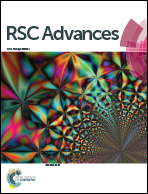Enhancement of tumor smart-targeting efficiency based on optical communication between signaling and receiving nanoparticles (modeling and analysis)
Abstract
As far as we know, this is the first time optical communication between signaling and receiving nanoparticles has been analyzed and simulated for tumor smart-targeting. The original aim was to achieve smart communication between the receiving nanoparticles far from the tumor and the signaling nanoparticles placed near the tumor, which can be used to lead to effective detection and treatment of cancerous tumors. The latter case can contribute to effective targeting by signaling nanoparticles and can aid in tuning drug delivery by the receiving agents. In this method, the gathering of nanoparticles at the tumor site is realized by the optical force that contributes to the interaction between the optical field and the nanoparticles around the tumor in such a way that enhances the population of nanoparticles towards the tumor. Furthermore, the manipulation of the optical force is controlled by the engineering of plasmon hybridization of core–shell nanoparticles. Unlike recent smart-targeting which is based on a biological cascade; in this work the communication between the agents is done optically, so the construction of fake sites in the normal tissues will be avoided, together with any harmful effects from them.


 Please wait while we load your content...
Please wait while we load your content...